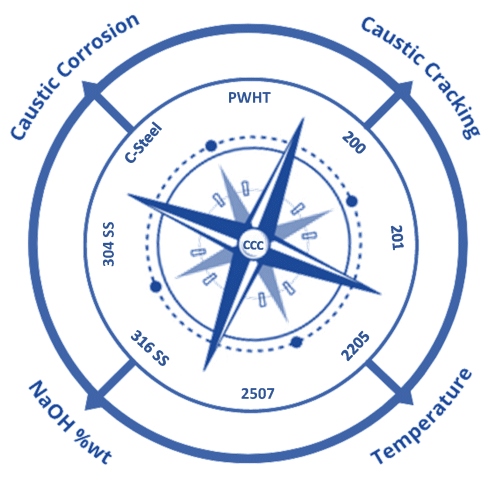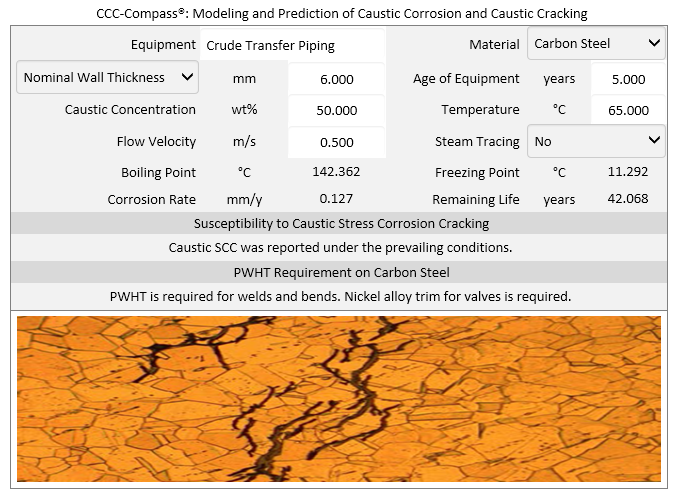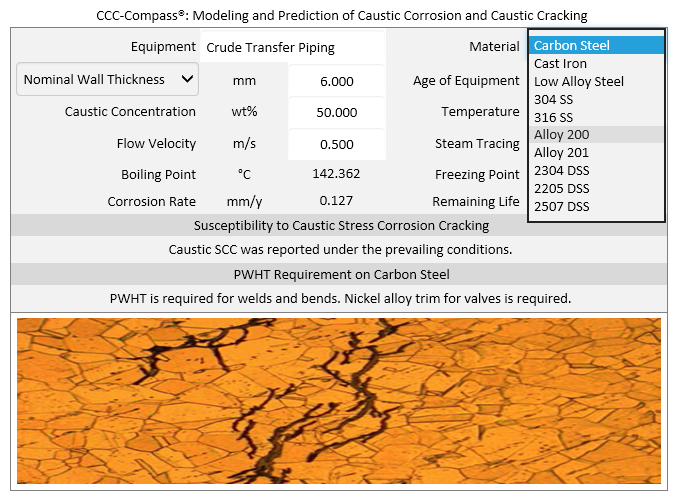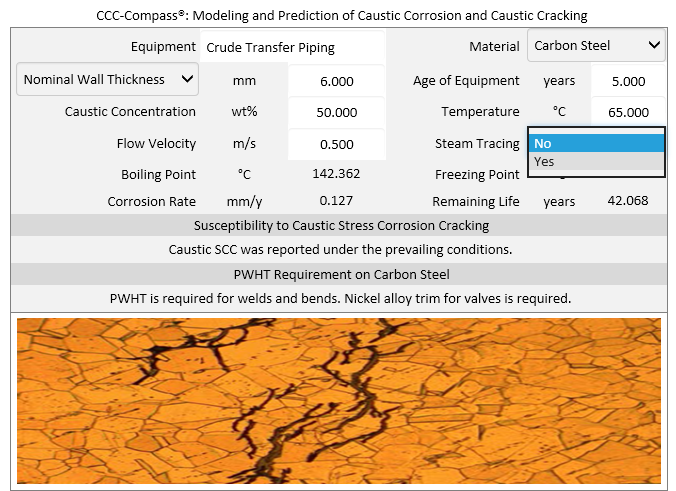|
Home | Consulting | Training | Expert Witness | Failure Analysis | Design Review | Corrosion Test | Corrosion Software | Protective Coatings | Materials Selection | Cathodic Protection | >>> | |
 Corrosion Modeling Software and Corrosion Prediction Software Series CCC-Compass®: Modeling and Life Prediction of Caustic Corrosion and Caustic Stress Corrosion Cracking Version 9.20
Anytime Anywhere Any Device Any OS No USB dongles No installation No Browser Plug-ins
|
|
|
Why WebCorr |
Performance Guarantee |
Unparalleled Functionality |
Unmatched Usability |
Any Device Any OS |
Free Training & Support |
CorrCompass |
|
|
Overview and Application Examples of CCC-Compass |
|
|
CCC-Compass is the only device and OS independent software tool on the market for the modeling and life prediction of caustic corrosion and caustic stress corrosion cracking of carbon steels, stainless steels and nickel alloys. Designers, OEM engineers, consultants, operation personnel, maintenance and inspection engineers can quickly and accurately determine: (1) the caustic corrosion rate under the prevailing operating temperature and caustic concentration; (2) the susceptibility to caustic stress corrosion cracking; (3) the requirement of post-weld heat treatment (PWHT) on carbon steels with and without steam tracing; (4) the remaining life of the equipment or piping in caustic services.
Figure 1 CCC-Compass for modeling and prediction of caustic corrosion and caustic stress corrosion cracking.
Under the prevailing operating conditions shown in Figure 1 above, the predicted caustic corrosion rate for carbon steel is 0.127 mm/y, the predicted remaining life (based on caustic corrosion rate) is 42 years. The predicted boiling point is 142.36°C and the freezing point (solidifying point) is 11.29°C. Under the prevailing operating conditions, CCC-Compass predicts that the carbon steel piping is expected to experience caustic stress corrosion cracking. Post-weld heat treatment is required for welds and bends and nickel alloy trim for valves is required for preventing caustic SCC.
CCC-Compass is a cloud-based software that works on any device running any OS without the need for users to install or download anything. Experience the industry's first cross-platform and device-independent caustic corrosion and caustic SCC modeling and prediction app on your iPads, tablets, smart phones, notebooks and desktops, at any time and anywhere, in the office or in the field. No installation files to download, no browser plug-ins required, no USB dongles to carry around, and no license keys to transfer from one PC to another. CCC-Compass simply works on any device running any OS. All you need is an internet browser.
Figure 2 CCC-Compass can be used as a powerful software tool for material selection and process optimization.
Figure 3 CCC-Compass models the effects of flow velocity and steam tracing on caustic corrosion and caustic SCC.
CCC-Compass models the effects of critical factors such as caustic concentration, temperature, flow velocity, PWHT, and steam tracing on the caustic corrosion rate and caustic stress corrosion cracking (SCC). By varying the selected material and the operating parameters, CCC-Compass can be used as a powerful software tool for material selection and process optimization. Integrity operating windows (IOWs) can also be easily established for the selected material.
The powerful applications of CCC-Compass are truly unlimited in engineering design, materials selection, process operation, inspection and maintenance, corrosion risk assessment, modeling and prediction of caustic corrosion and caustic stress corrosion cracking (SCC) of equipment and piping in caustic services.
Click here to contact us for licensing details and experience the power of
CCC-Compass. |
|
CCC-Compass, giving you the right directions in the Modeling and Prediction of Caustic Corrosion and Caustic SCC. |
|
|
Home | Contact Us | PDF |
Copyright © 1995-2025. All rights reserved. |



